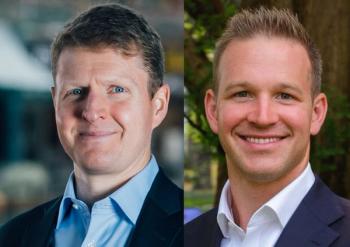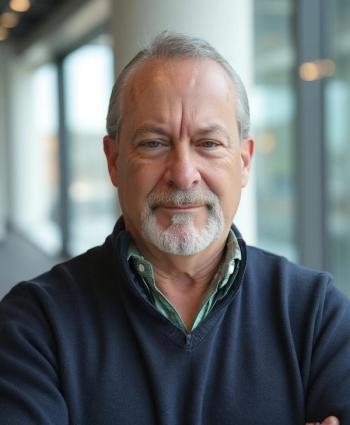
The eroding trust between patients and physicians
Why the relationship is strained and what doctors can do to strengthen the connection
For decades, physicians were among the most respected professionals in the United States. But that’s changing.
Patients’ trust in their doctors and healthcare in general is declining and the consequences go beyond physicians’ lowered status. A lack of trust can lead to decreased patient compliance, worse outcomes, corrosive physician-patient interactions, and physician burnout.
This article appears in the 4/10/18 issue of Medical Economics.
“The physician-patient relationship has taken a major hit over the years and the connection is much less than it used to be,” says Andrew Morris-Singer, MD, an internist and president of Primary Care Progress, an organization working to improve primary care. “We have to reimagine the relationship. It has to evolve because the current relationship isn’t working.”
Eroding trust
In 1966, 73 percent of Americans said they had great confidence in the leaders of the medical profession. In 2012, only 34 percent felt the same way, according to a 2014 study published in the New England Journal of Medicine. Similarly, in a 2017 SERMO survey, 87 percent of U.S. physicians said patients trust their doctors less than they did 10 years ago.
Healthcare is not the only institution suffering from an erosion of trust. Organized religion, government, media, law enforcement, the financial system, higher education, and almost every other pillar of society is as well. Social scientists have attributed this to everything from higher levels of education, the spread of the internet, and failures of the institutions themselves.
Healthcare, once regarded as a bastion of altruism and incorruptibility, has been revealed to be as imperfect as any other institution. Thanks to the fights over the Affordable Care Act, proposals to cut Medicare and Medicaid and the push for universal coverage, healthcare has become a highly controversial issue for providers and patients alike. Healthcare systems, insurers and professional organizations like the American Medical Association have all been accused of acting out of self-interest, rather than in the best interest of patients.
HOT TOPIC:
In addition, patients now have access to information that makes it easier for them to second-guess their physicians. The internet allows them to do their own research and arrive at their own diagnoses and treatments, correct or not. As a result, fewer patients defer to physicians without question and, if their information conflicts with their doctors’ views, they might be less likely to trust their doctors.
Finally, physicians sometimes suffer for the sins of the entire industry. When an insurer declines to pay for a procedure or hikes the co-pay for an office visit, it’s often the physician who delivers the bad news to the patient, which can damage the relationship between them.
Why trust matters
Patients who mistrust medicine or physicians to the point that they avoid healthcare altogether obviously put themselves at great risk, but those are the most extreme cases. Primary care physicians are more likely to encounter distrustful patients who are disinclined to seek healthcare, unforthcoming in conversation, and suspicious of diagnoses and treatments.
All of those can damage the doctor-patient relationship.
Numerous studies have shown trust is important to an effective doctor-patient relationship. A meta-analysis published last year in PLOS ONE found a “small to moderate correlation” between patient trust in their healthcare professionals and health outcomes. Patients who trust their physician are more likely to follow prescribed courses of treatment.
Trust is an important factor in patients’ decisions whether to enroll in clinical trials and research projects, according to a study in the Journal of Clinical Oncology. And trusting patients are more likely to stay with the same providers of care, which can have positive results, such as fewer emergency department visits.
If there’s a silver lining amid all the discouraging data, it’s that even patients who distrust the healthcare system tend to like their own doctors, just as voters despise Congress but keep re-electing their own representatives. A 2013 Gallup poll found that 69 percent of the public rated the honesty and ethical standards of physicians as a profession as “very high” or “high.” That can be a foundation from which physicians can build trusting relationships.
Patients want to trust their physicians, Morris-Singer says, it’s just that the modern healthcare system gets in the way. Doctors should be aware of why patients might not trust them, but keep working toward building a more productive relationship, he says.
No time for trust
While many factors contribute to the erosion of trust, experts blame a lack of time with patients more than anything else. Trust tends to build over time and through repeated interactions, which can be difficult to provide in primary healthcare.
“In these impersonal medical systems, there is very little time for clinicians to establish meaningful rapport with patients,” says Stephen Post, Ph.D., director of the Center for Medical Humanities, Compassionate Care, and Bioethics at State University of New York at Stony Brook. “They’ve got to see eight patients in 30 minutes. Given that kind of a pace, it’s extremely difficult to build trust and to create meaningful, healing relationships.”
Physicians can no longer expect patients to trust them just because they’re doctors; it must be earned. “Clinicians are not factory workers, though oftentimes they feel they are,” Post says. EHRs can make abbreviated appointments even worse for patients if their doctor is too busy typing on a laptop to make eye contact or engage in conversation, he says.
Sometimes, patients aren’t with the same physician long enough to build trust. As employers shop for the lowest health insurance rates, they can change carriers and contracts as frequently as every year. That can force patients to switch doctors, which means their existing patient-physician relationship is erased and a new one has to be built from scratch.
How to build trust
Some physicians have built their practices around models that allow them to form the kind of relationships with patients that the doctors think is crucial. For example, after years in various group practices, Pamela Wible, MD, created her ideal family practice in Eugene, Ore., 13 years ago. It’s just her, no providers or staff. Thirty- to 60-minute appointments are the norm and she takes the time to get to know her patients.
“I actually get to develop a relationship with my patients and that leads to better care and better outcomes and an ability to determine what’s really going on underneath a patient’s initial complaint,” she says.
The ability to spend more time with patients is crucial to successful diagnoses and treatment, she says. “If they don’t trust you, they may not tell you that they’re a sex worker; they may not tell you that they’re doing illicit drugs; they may not tell you what’s really concerning them for fear of being judged by you,” Wible says.
MORE:
A desire for a closer relationship with their patients is one of the reasons Matthew and Janelle Pflieger, husband-and-wife osteopaths, left a busy clinic in Denver in 2016 to open a direct-pay family practice in rural Huntington, Ind. Matthew says he builds trust with patients through longer appointments and genuine expressions of interest: “It’s about asking questions and showing you care for people and it’s asking about their family and their kids and other things.”
As the first direct primary care practice in the area, the Pfliegers have had to educate patients about how they operate, but the response to the model has been positive, says Matthew. “Patients are really looking for someone they can have a relationship with,” as opposed to a harried physician with an eye on the clock, he says.
Of course, building an independent practice with 30-minute appointments is not an option for most physicians. In fact, more doctors are joining large group practices and healthcare systems that come with performance metrics, productivity reviews, and third-party scheduling, all of which can increase pressure on doctors to see more patients in less time. So what can a physician do to build patient trust within the constraints of a system not conducive to doing so?
Fight for time with patients, says Wible. Show administrators the research that time leads to trust which can lead to better outcomes. Use staff to perform duties that take away from interaction with patients. And use that time to listen.
“Doctors are famous for interrupting (patients) within 15 seconds,” says Post. “Let people have a little bit of time to talk about the personal aspects of their illness and then add an affirming comment, like ‘That must be very difficult.’”
Answer patients’ questions honestly, adds Pflieger. “When (doctors) don’t answer or give answers that aren’t helpful, that’s when the distrust happens.”
Take advantage of the five to 10 minutes patients typically spend in the exam room waiting for the physician, Wible says. Hang a whiteboard on the wall and ask patients to write down questions, concerns and goals for the visit while they wait for the doctor. This provides the physician with a quick summary of patients’ priorities.
Dhruv Khullar, MD, MPP, an internist in New York City who wrote a New York Times column on trust, says clear and open communications with patients is crucial. “Always tell the patient what you’re doing, why you’re doing it and reassure them about the fact you’ve done this before or maybe you haven’t done it before. All that needs to be very transparent,” he told Medical Economics.
Doctors also should disclose conflicts of interest to dispel any suspicions about their motives; and do what they can to level the imbalance of power in their relationships with patients, Khullar says.
One way doctors can level the relationship, according to an article in the AMA Journal of Ethics, is to explain to patients why they make the decisions they do and employ shared decision making, which invites patients to become partners in their treatment.
And remember, Khullar says, trust doesn’t come automatically; it takes time and commitment. “If we work hard to demonstrate that we’re trustworthy,” he says, “patients will trust us over time.”
Newsletter
Stay informed and empowered with Medical Economics enewsletter, delivering expert insights, financial strategies, practice management tips and technology trends — tailored for today’s physicians.














